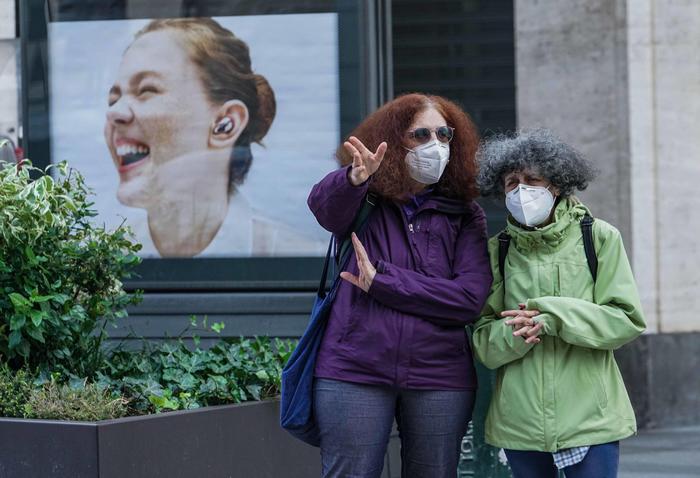by Alessio Jacona *
"Say thirty-three!".
How many times, during a medical examination, a doctor asked us to repeat this sequence of sounds while at the same time auscultating our back with a stethoscope, to evaluate the state of our lungs according to how the sound propagated in the rib cage.
Today the artificial intelligence developed by VoiceWise, a spinoff of the University of Tor Vergata in Rome, does something similar, only multiplied to the nth degree, to hunt down (also) Covid-19.
We are talking about algorithms "trained" to listen to the human voice, to grasp every nuance to find small but significant variations which, once correctly interpreted, allow artificial intelligence to indicate a specific pathology.
Born from an idea of Professor Giovanni Saggio, professor at the Department of Electronic Engineering of the University of Tor Vergata, VoiceWise is today the company protagonist of a clinical trial to diagnose and monitor the coronavirus infection activated at the Tor Vergata Polyclinic of Rome, the Technoscience Technological Park of Latina and the San Matteo Foundation Polyclinic of Pavia.
The system involves the use of devices such as smartphones and tablets provided in support of the project by the Chinese manufacturer Huawei (including Mate30 Pro, P30 Pro, Nova 5T, P Smart, Y6s, Mediapad M5 lite), which are used "for their ability to record audio appropriately and because it was not possible to bring to patients in isolation microphone and tape recorder that we usually use, ”explains Professor Saggio.
The devices are delivered to volunteer (and anonymous) Covid-19 patients to record "their voice, coughs and everything the algorithm needs to be trained to identify the disease".
In practice, the VoiceWise technology is usable through a web app (for now accessible only by invitation and aimed at supporting a real doctor) with which to activate the AI that listens to our voice and provides what is defined. an early screening, which must then be followed by a doctor's diagnosis.
"Up to now 150 patients have been monitored, but now we are aiming to expand the experimentation to improve the efficiency and reliability of the system".
The latter is already very promising: VoiceWise, in fact, does not limit itself to identifying the sick but also to establish an initial estimate of the severity of the disease possibly in progress, allowing the doctor to evaluate what to do at a distance.
In addition, it seems to work even better than swabs: «In only two cases we had different results from the tests - in fact Professor Saggio recalls - where the artificial intelligence recognized as sick two patients who tested negative in clinical tests.
However, further investigation revealed that the patients were positive, just as the algorithm suggested.
The ongoing experimentation with the coronavirus and the very fact that the system analyzes the voice, could lead to think that the technology developed by VoiceWise is only useful for signaling potential diseases of the respiratory tract.
This is not the case: "We have been working since 2009, and therefore long before the Covid-19 emergency, to identify various pathologies with a level of accuracy that settles between 95% and 98%", recalls Giovanni Saggio .
According to the professor, over six thousand parameters can be found in the human voice including the fundamental frequency, harmonics, signal to noise ratio, jitter and shimmer, just to name a few, and the modification of which (which the human ear does not perceive but the algorithm yes) can indicate the presence of more than one specific disease.
The case of Parkinson's, on which Saggio and his colleagues have been working for years, is enlightening in this regard: here the patient "tends, for example, to separate words more, to support vowels more, highlighting changes in speech that directly depend on this specific neurological problem 'and which differ from those caused by Alzheimer's or heart disease.
Each disease leaves a complex imprint in the voice, which now becomes recognizable by artificial intelligence allowing it to warn the patient.
The use of Huawei devices also opens up other screening opportunities: in addition to the microphone they are equipped with, it is in fact also possible to experiment with the use of in-ear bluetooth headphones, which collect sound in a significantly different way.
In fact, they work near the face, where the bone conduction of sound also comes into play in the propagation of sound waves, bringing even more information to feed to the VoiceWise algorithms.
* Journalist expert in innovation and curator of the Artificial Intelligence Observatory ANSA.it









